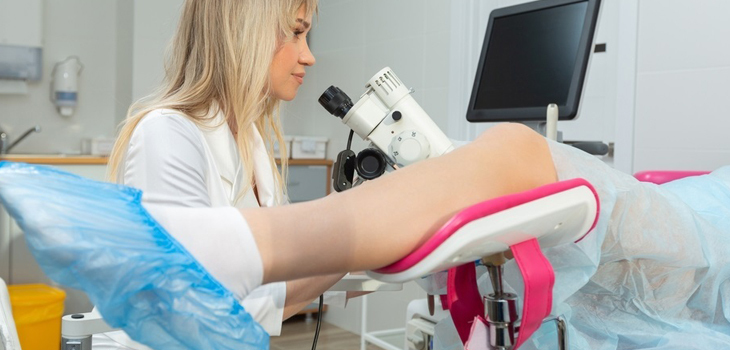
The cervix is a narrow section of the lower uterus that is part of a woman’s reproductive system. It is also known as the neck of the womb or the entrance to the womb. Cervical cancer cells form in this area of the body. These cancer cells grow into malignant or cancerous tumors, which can invade and destroy nearby tissue. The tumor can also spread to other parts of the body, which is known as metastasis.
Sometimes the cells in the cervix change and grow and behave abnormally and can lead to the development of noncancerous (benign) tumors, such as fibroids and polyps.
Occasionally, changes in cervix cells can also signal the start of a precancerous state. A long-term disregard for treatment could result in these abnormal cells becoming cancer, even though they are not yet cancer. Depending on how it is classified or reported, the most common precancerous condition of the cervix can go by different names. The most common classifications for precancerous cervix conditions are squamous intraepithelial lesion (SIL), cervical dysplasia, and cervical intraepithelial neoplasia (CIN).
When changes in cells lead to cervical cancer most often it begins in the round, flat cells known as squamous cells. These cells line the cervix’s outer rim. Squamous cell carcinoma of the cervix is the medical term for this type of cancer. Cancer can also begin in other types of cells, known as glandular cells. In the female reproductive system, these cells line the passageway that links the uterus and the vagina. Cervical squamous cell carcinoma is the name given to this type of cancer. Other uncommon types of cervical cancer include adenocarcinoma, adenosquamous carcinoma, mucoepidermoid carcinoma, and glassy cell carcinoma.

Risk Factors That Can Lead to Cervical Changes
A few women are predisposed to precancerous cervical changes. These risk factors are as follows:
- Infected with human papillomavirus (HPV), a common sexually transmitted infectious disease
- Smoking
- Weakened immune system
- Infected with other types of STDs such as Chlamydia, Herpes, etc.
- Overweight
- Excessive use of Birth Control Pills
- Had At least 3 full-term pregnancies
- Having a history of cervical cancer in one’s family
These variables can raise your risk, but they do not determine your future.
Cervical Cancer Stages
Identifying the stage of cancer is critical because it enables individuals to choose the most effective course of treatment. The goal of staging is to determine how far cancer has spread or if it has reached nearby structures or distant organs. The most common method for staging cervical cancer is a four-stage system:
Stage 0: Presence of precancerous cells.
Stage 1: Cancer cells have extended from the cervix’s surface into deeper tissues, conceivably into the uterus, and to nearby lymph nodes.
Stage 2: Cancer has spread past the cervix and uterus, but not to the pelvis or lower vaginal wall. It won’t necessarily affect the lymph nodes nearby.
Stage 3: Cancer cells have been discovered in the lower part of the vagina or the pelvic walls, and they may be intercepting the ureters, which are the conduits that bring urine from the bladder. It won’t necessarily affect the lymph nodes nearby.
Stage 4: Cancer has spread from the pelvis to the bladder or rectum. It may or may not have an effect on the lymph nodes. Subsequently, in the fourth stage of cervical cancer, the cancer cells would spread to distant organs such as the bones, lungs, liver, and lymph nodes.
Screening and seeking medical attention if any symptoms arise can assist a person in receiving early treatment and increasing their chances of survival.
Symptoms of Precancerous State of Cervical Cancer
Precancerous variations in the cervix usually do not cause any noticeable signs or symptoms. An abnormal Pap test result is frequently the first indication that some cells in the cervix are abnormal, making it critical for those at high risk of developing this condition to have this test done on a regular basis. Women with precancerous cervical cells may be unaware of their condition because it is not a well-known type of cancer symptom. These are some examples of precancerous cervical cancer symptoms:
- Itching or burning sensations in the vaginal region
- Back or abdominal ache
- Unexplained exhaustion
- Urgent or frequent need to urinate
- Bloating in the abdomen
The symptoms of cervical cancer become more noticeable only when cancer has manifested and spreads to other tissues.
Treatment for Cervical Cancer in Its Precancerous Stage
Most women who are treated for precancerous cervix conditions have a positive outcome and their condition will not progress to cervical cancer.
Therapies for precancerous cells discovered during a Pap test varies:
- Mild cervix changes often resolve on their own without the need for treatment.
- More severe abnormalities are far more likely to advance into cervical cancer, all the more so if they go untreated for an extended period of time.
As it’s difficult to predict which of these will progress to invasive cervical cancer, they are typically treated shortly after they are discovered.
Precancerous changes in the cervix may be treated with a variety of methods, including:
- Loop Electrosurgical Excision Procedure (LEEP)
- Hysterectomy
- Cryosurgery
- Cone Biopsy Procedure
- Laser surgery
Symptoms of Cervical Cancer
Cervical cancer may not produce any obvious symptoms in its early stages; additionally, other health conditions also can produce symptoms similar to cervical cancer. The symptoms of Cervical cancer are often manifest only when the tumor cells have begun spreading to surrounding tissues and organs. A few of the typical cervical cancer symptoms include the following:
- Abnormal vaginal bleeding, including bleeding during periods, after menopause, and after sexual activity
- Abnormally high or increased vaginal discharge
- Menstrual cycles that are unusually long or heavy
- Bleeding following a pelvic examination or vaginal douching
- Pain during a sex
- Trouble urinating
- Experiencing difficulty passing a bowel movement
- Urine or Feces leaking from the vagina
- Pelvic or Back pain that may radiate down one or perhaps both legs
- Swelling of leg, typically in one of the legs
- Appetite loss
- Respiratory problems
- Coughing blood
- Fatigue
- Pain in the chest or bones
Treatment of Cervical Cancer
Surgery, radiotherapy, chemotherapy, or combinations of these therapies are some of the treatment options available for cervical cancer.
The type of treatment chosen is based on several criteria, including the stage of cancer, age, and health status.
When the cancer is still contained within the cervix, treatment for early-stage cervical cancer has a high success rate. But as cancer spreads further away from its original site, the survival rate and percentage of successful treatment drop.
Early-Stage Treatment Options
Surgical intervention is a predominant treatment method when cancer cervix is in early stage. If a biopsy indicates disease spread into lymph nodes, then radiation is given after surgery.
Advanced-Stage Treatment Options
Surgery is usually not an option when cancer has spread beyond the cervix. This type of cancer necessitates more extensive treatment, which usually includes radiotherapy or a pairing of radiotherapy and chemotherapy.
Palliative care is delivered by health care providers in the later stages of cancer to alleviate the symptoms and enhance the quality of life.

Vaccine for cervical cancer:
In recent times, a vaccine for the HPV virus has been introduced and widely administered with promising results. The HPV vaccine is advised for all boys and girls between the ages of 11 – 12. It can be administered up to 26 years of age.
Conclusion
Each woman must become acquainted with her own body and be aware of what is normal for her in order to detect cervical cancer early. They should be proactive about their cervical health and have regular screenings. Women should begin this screening at the age of 21, according to Dr. Mehta’s Hospitals. From there, proceed as follows:
- Women between the ages of 21 and 29, should have a pap test every 3 years without HPV screening and women between 30 and 65 should have a pap test with HPV testing every 5 years.
- Women over the age of 65 who have had regular checkups and no significant pre-cancers in the past twenty years are eligible to discontinue screening.
If you want you can talk to a gynecologic oncologist at Dr. Mehta’s Hospital about possible cervical cancer symptoms. Call 044-4005 4005 or fill out our online new patient registration form to get started.
